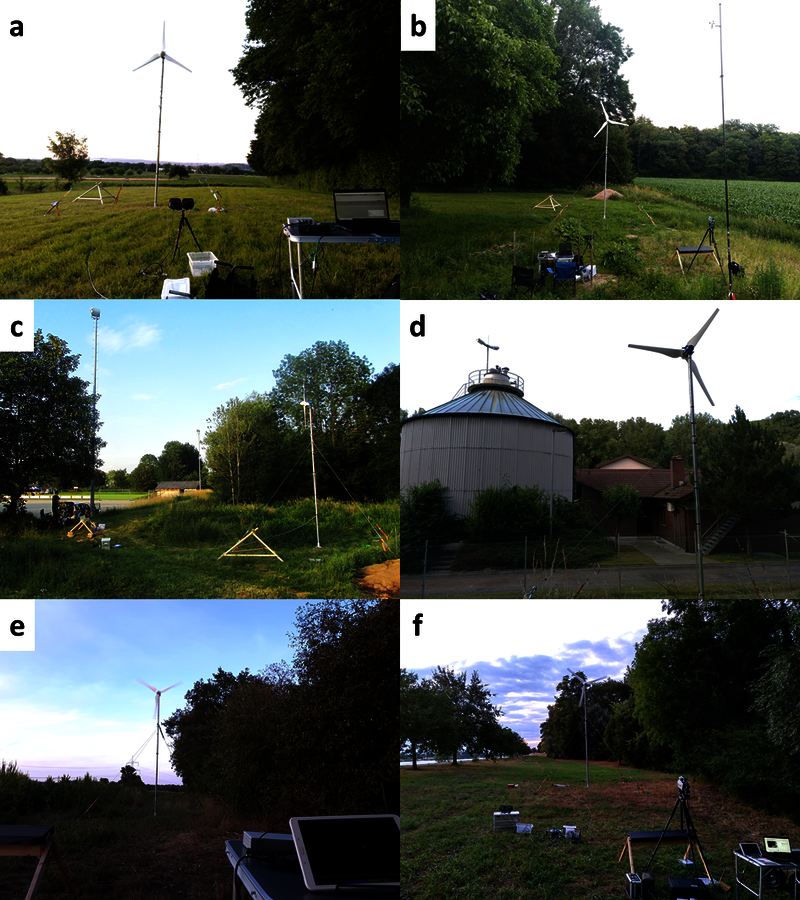The field study was the first to investigate the danger for bats at a newly constructed small wind turbine (SWT). For this purpose, the researchers set up a modified mobile SWT at six sites selected for their high bat abundance. Using night vision equipment, a thermal imaging camera and a 3-D infrared camera, the flight behaviour of the bats was recorded at each site on four to five nights and subsequently evaluated.
The recordings showed high bat activity levels close to the SWT independent of rotor motion or velocity. Exploratory behavior was frequently observed, with many bats deviating from their original flight trajectory to approach the rotor. Bats approached the rotor closer if the rotor was not moving or moving slowly. Generally, site (with different species spectrum, different vegetation etc.) had a stronger influence on the approachment behavior than operational mode. For example, Myotis species approached the rotor closer than pipistrelles, and pipistrelles closer than Nyctaloids.
Among 7,850 documented trajectories, 176 crossed the rotor, including 65 while it was in motion. The collision of one P. pygmaeus individual occurred during the experiment. These results demonstrate that, despite the generally strong ability of bats to evade moving rotor blades, bat casualties at SWTs placed at sites of high bat activity can reach or exceed the current threshold levels set for large wind turbines.
Hartman, S., Günther, F., Lüdtke, B., Hochradel, K., Schauer-Weisshahn, H., Brinkmann, R. (2021): Berücksichtigung von Fledermäusen bei der Errichtung von Kleinwindenergieanlagen – Ein Experiment in Süddeutschland. Bonn-Bad Godesberg, BfN-Skripten 604
An English publication on the research project is also available:
Hartmann SA, Hochradel K, Greule S, Günther F, Luedtke B, Schauer-Weisshahn H, et al. (2021) Collision risk of bats with small wind turbines: Worst-case scenarios near roosts, commuting and hunting structures. PLoS ONE 16(6): e0253782. doi.org/10.1371/journal.pone.0253782

